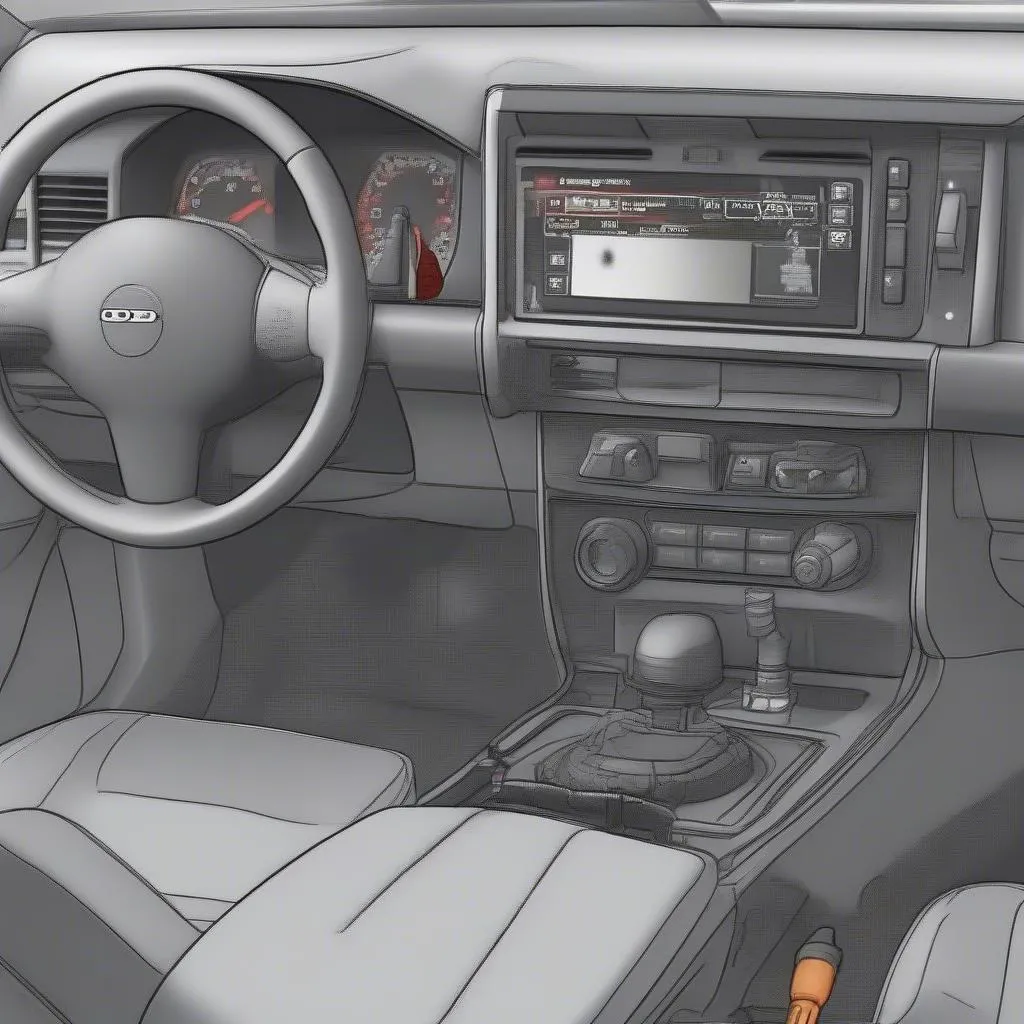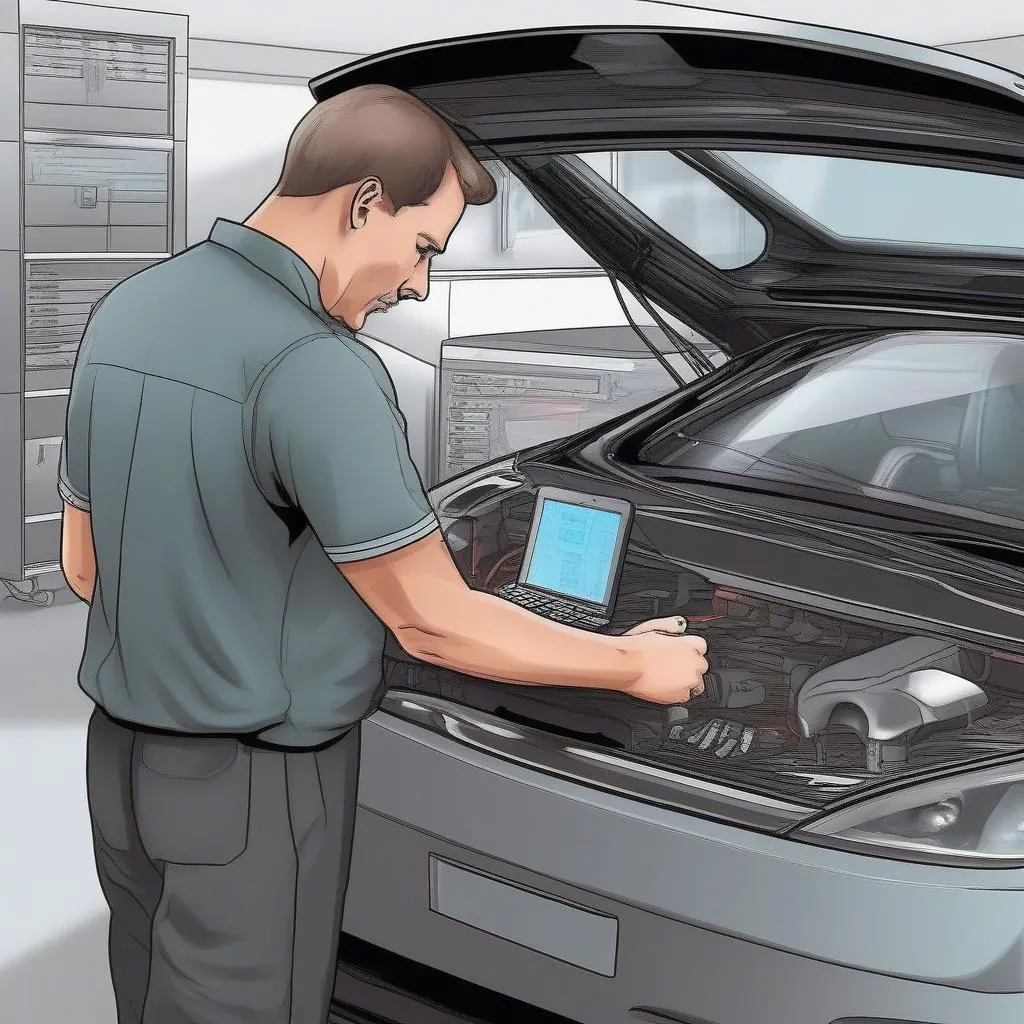It’s a common scenario: you’re ready to diagnose your car’s issues yourself, or perhaps even tinker with some performance modifications, and you’ve heard about the wonders of the OBD II port. But then you find yourself staring at your engine bay, wondering, “Where is it?” You might even have found a port, but you’re not sure if it’s the right one. Well, you’re not alone! This article is all about clearing up any confusion about the OBD II port.
What is the OBD II port?
The OBD II port, or On-Board Diagnostics II port, is a standardized connector that allows you to communicate with your car’s onboard computer system. It’s basically a gateway to all sorts of valuable information about your vehicle’s health, performance, and potential problems. OBD II ports are often found on cars made after 1996, and their use is mandated by the United States Environmental Protection Agency (EPA).
Why is the OBD II port so important?
Imagine being able to access a detailed report card on your car’s performance, and the ability to pinpoint exactly what needs attention. That’s what the OBD II port gives you. It enables you to:
- Diagnose Check Engine Lights: When that dreaded Check Engine light flickers on, the OBD II port can help you identify the root cause. This could save you a lot of time and money at the mechanic’s!
- Read Diagnostic Trouble Codes (DTCs): These are codes that indicate specific problems with your car’s systems, like a faulty sensor or a clogged catalytic converter.
- Monitor Real-Time Data: Want to see how your engine is performing? The OBD II port can show you live data like engine RPM, fuel consumption, and coolant temperature.
- Use Diagnostics Tools: The OBD II port is compatible with a wide range of diagnostic tools, such as Dealer Scanners for European Cars. These scanners can access more advanced information, allowing you to perform deeper diagnostics.
Where is the OBD II port on my car?
The OBD II port is typically located under the dashboard, on the driver’s side, near the steering column. It’s usually a 16-pin connector, and it may be covered by a small flap or a protective cap.
But it’s not always that easy! Some car manufacturers have opted to place their OBD II port in less conventional locations.
 Finding the OBD II Port Under the Dashboard
Finding the OBD II Port Under the Dashboard
For example, some European vehicles might have their OBD II port located in the glove box, under the center console, or even in the trunk. If you can’t find it, your owner’s manual is your best resource. If you’re still lost, check with your local European car dealership for assistance.
What should I do once I’ve found the OBD II port?
Once you’ve located the OBD II port, you’re ready to start using it. You’ll need to purchase a compatible diagnostic tool, such as a Dealer Scanner for European Cars. These scanners can read diagnostic codes, monitor live data, and even perform some basic programming functions.
 Using a Dealer Scanner for European Cars
Using a Dealer Scanner for European Cars
Remember, using a diagnostic tool requires some knowledge of automotive systems. If you’re not comfortable working with electronics or automotive systems, it’s best to leave the diagnostics to a qualified mechanic.
How can I learn more about the OBD II port?
There are tons of resources available online and in libraries:
- OBD-II.com is an excellent starting point for information on OBD II technology, including articles, forums, and FAQs.
- TechCarUSA.com provides a comprehensive guide to car maintenance, including articles on how to use the OBD II port.
- Check out YouTube: Search for videos on using OBD II scanners, troubleshooting specific issues, or even performing your own repairs.
Looking for more information on car diagnostics?
- How do I use a Dealer Scanner for European Cars?
- What are the best OBD II scanners for European cars?
- What are the most common OBD II codes?
- How to use a Dealer Scanner to reset the Check Engine Light?
Ready to take control of your car’s health?
Contact us for expert help with configuring your Dealer Scanner for European Cars. Our team of automotive professionals is available 24/7 to answer your questions and provide guidance.
Let’s get you on the road to understanding your car better!